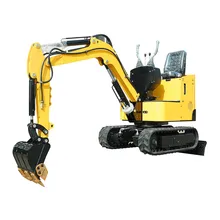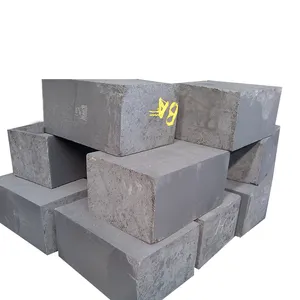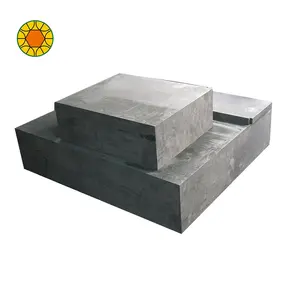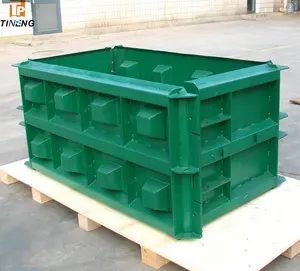Introduction
Construction is a world where every detail matters. One such detail that can significantly impact the outcome of a project is the size of the concrete blocks used. This comprehensive guide, 'Size Matters: Your Comprehensive Guide to Selecting the Ideal Concrete Block Size for Your Construction Project', delves into the importance of choosing the right size of concrete blocks, also known as cinder blocks or Concrete Masonry Units (CMUs). We will explore the different types of concrete blocks, their standard sizes, and why size matters in terms of structural integrity, cost efficiency, and aesthetic appeal. We will also guide you on how to select the right block size for your specific project, considering project requirements and professional advice.
Understanding Concrete Blocks
Concrete blocks, often referred to as cinder blocks or CMUs, are fundamental to construction. They are typically made from a blend of cement and aggregate materials and are used to construct a variety of structures. The process of laying concrete blocks involves creating a solid footing using a concrete mix, followed by laying the blocks in a bed of mortar, ensuring correct alignment and joint width. The size of the concrete block chosen can significantly influence the structural integrity, cost efficiency, and aesthetic appeal of the finished structure.
Types of Concrete Blocks
Concrete blocks or CMUs primarily come in two types: hollow and solid. Hollow blocks, known for their lightweight and versatility, have holes that allow for the running of wires and pipes, making them ideal for large structures. Solid blocks, on the other hand, are dense and robust, suitable for applications requiring durability, such as walls and foundations. There are also several varieties of hollow and solid blocks, each with unique features and applications, ensuring a suitable type for every construction need.
Standard Sizes of Concrete Blocks
Concrete blocks come in a variety of standard sizes. Typically, they have nominal face dimensions of 8 in. (203 mm) by 16 in. (406 mm), available in nominal thicknesses of 4, 6, 8, 10, 12, 14, and 16 in. (102, 152, 203, 254, 305, 356, and 406 mm). These dimensions are for planning bond patterns and modular layout. However, other unit heights, lengths, and thicknesses may be available from local concrete masonry producers, providing flexibility for different construction needs.
Why Size Matters: The Importance of Choosing the Right Block Size
The size of CMUs or concrete blocks is crucial for both structural and aesthetic reasons. They are identified by their depth, which determines the thickness of the wall they create. For instance, a 6" CMU is nominally 6" deep while a 10" CMU is nominally 10" deep. The architect should always attempt to design buildings using the nominal dimensions to the nearest half-block size to reduce waste and labor due to cut blocks. The weight of CMUs also varies depending on the density of the concrete mix used, affecting their cost, installation labor, and properties like fire resistance and sound transmission.
Structural Integrity and Stability
The H-type gravity mutual-aid steel slag core concrete block, a new type of concrete block, offers superior structural integrity and stability. Its design, which includes a concrete shell and a steel slag core, ensures high compressive strength. The block's unique interlocking feature enhances stability, making it an excellent choice for revetment works. The optimal shell thickness of this block is 6 cm, and it can replace the natural aggregate ratio by 25%, offering a sustainable and cost-effective solution for construction projects.
Cost Efficiency
Concrete blocks are a cost-effective choice for building construction. Their pricing depends on factors like size, weight, raw material quality, and production procedures. Interestingly, concrete blocks are cheaper than traditional bricks and other construction materials such as wood. The cost-effectiveness of concrete blocks extends beyond the construction phase. They require less labor and time to construct, leading to significant savings. Furthermore, their durability and low maintenance needs result in long-term cost efficiency. Therefore, choosing the right size of concrete blocks can contribute to substantial cost savings in your building project.
Aesthetic Appeal
The aesthetic appeal of concrete masonry lies in its versatility. The finished appearance of a concrete masonry wall can be varied with the unit size and shape, color of units and mortar, bond pattern, and surface finish of the units. This allows the structural wall and finished surface to be installed in a single step. Furthermore, concrete masonry interacts with changing sunlight, appearing to change color as the light hits the wall at different angles. This attribute can be used to advantage with electric lighting, as well as on interior walls.
How to Choose the Right Concrete Block Size for Your Build
Choosing the right concrete block size for your build is crucial. CMUs come in a variety of sizes, identified by their depth. For instance, a 6" CMU is nominally 6" deep while a 10" CMU is nominally 10" deep. They also come in half-sizes, reducing the need for cutting blocks in the field. Architects should design buildings using the nominal dimensions to the nearest half-block size to minimize waste and labor. Always check with your local CMU manufacturer for any special shapes or finishes needed.
Assessing Your Project Needs
The correct selection of concrete block size is the foundation of any successful building project. A wrong choice during the pre-construction phase could compromise the entire project, leading to delays, safety issues, additional expenses, and headaches. Consider the physical fit of the blocks on your site, environmental conditions, and the feasibility of utilities. Also, take into account the zoning regulations and demographics of the area. Working with an experienced contractor can help you select the right block size and ensure that nothing gets overlooked, keeping your project on time and on budget.
Consulting with Professionals
When choosing the right concrete block size for your build, it's crucial to consult with professionals. They can guide you on the ASTM standards that apply to concrete masonry units, ensuring the blocks conform to appropriate materials, compressive strength, dimensional tolerance, and moisture absorption. They can also help you understand the weight classifications of CMU, which can impact cost, installation labor, fire resistance, sound transmission, and thermal storage capacity. Remember, the weight of the CMU can significantly affect the structural integrity and stability of your build.
Considerations for Specialized Builds
Specialized builds often require unique concrete block shapes and sizes. U-shaped blocks, or knockout blocks, allow the construction of bond beams or lintel assemblies. Jamb blocks secure doors to wall assemblies, while blocks with grooved ends permit the construction of control joints. Radiused corners, known as 'bullnoses', may also be incorporated. Decorative profiles and specific colors or textures can be achieved by formulating blocks with special aggregates. For instance, an 8-by-16-inch block may be scored in the middle to simulate 8-by-8-inch masonry. These considerations are crucial for specialized builds.
Conclusion
Choosing the right size of concrete blocks for your build is a critical decision that can significantly impact the structural integrity, cost efficiency, and aesthetic appeal of your project. It's essential to understand the types and standard sizes of blocks, assess your project needs, and consult with professionals to ensure the best outcome. Specialized builds may require unique block shapes and sizes, adding another layer of complexity. Remember, in construction, size does matter. By making informed decisions about the size of your concrete blocks, you can ensure a successful, cost-effective, and aesthetically pleasing build.






























 浙公网安备 33010002000092号
浙公网安备 33010002000092号 浙B2-20120091-4
浙B2-20120091-4